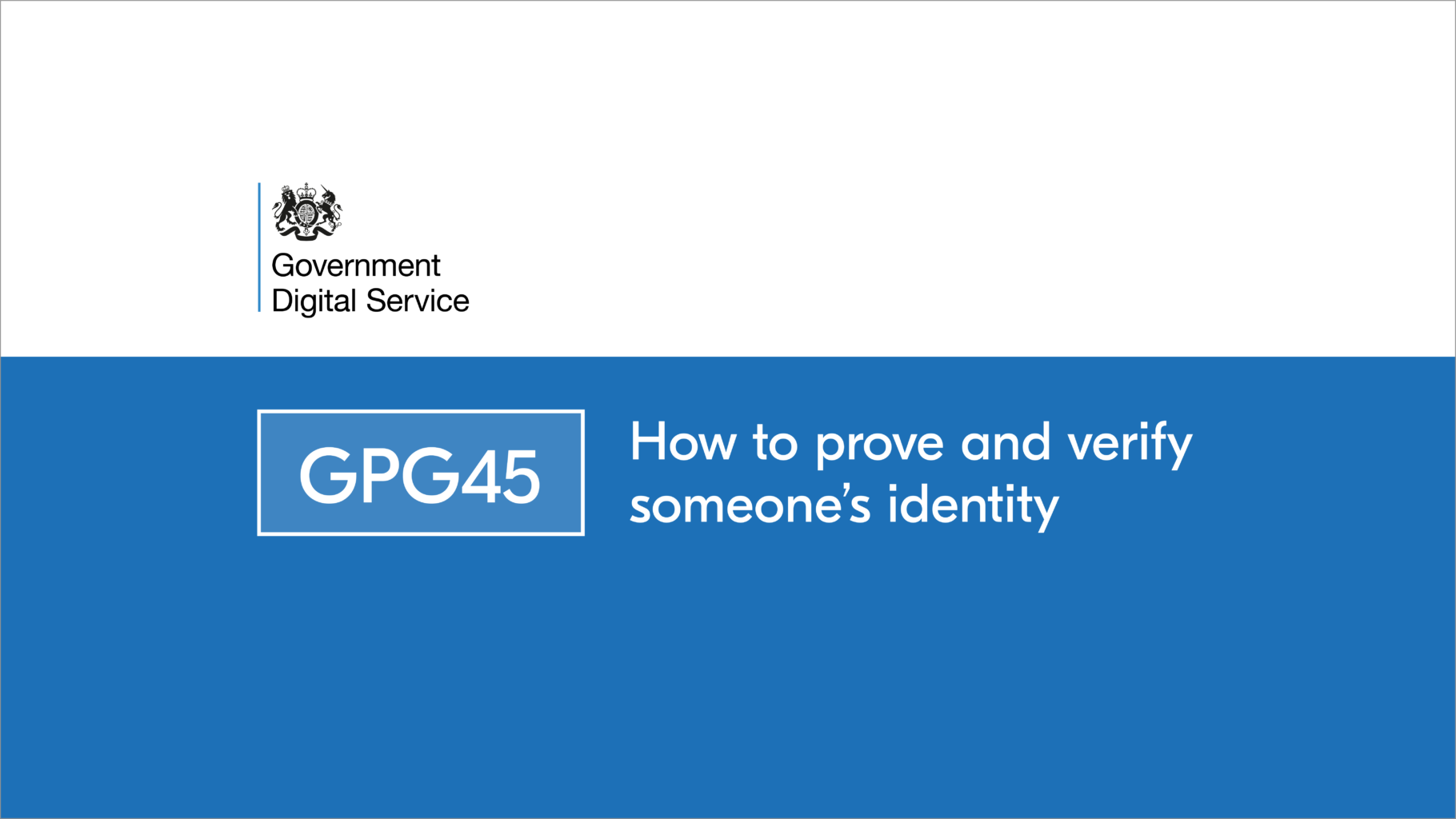
In April, we wrote about the significant changes made to the Good Practice Guide (GPG) 45, the UK government’s standard for checking and verifying someone’s identity.
If you’ve ever had to verify your identity with the government, it’s likely the process followed GPG 45.
The guide is made up of five parts:
- Get evidence of the claimed identity;
- Check the evidence is genuine or valid;
- Check the claimed identity has existed over time;
- Check if the claimed identity is at high risk of identity fraud;
- Check that the identity belongs to the person who’s claiming it.
What’s new this time?
Previously, GPG 45 had been a source of considerable headache for citizens, relying parties and digital identity providers alike. However, the government has continued to expand its approach to identity verification and there are two things that stand out.
First, the government has separated the guidance on how to perform identity verification from the identity profiles. Identity profiles are built following the rules set out in the guide, with certain scores needed in each of the five sections. The identity profile represents an overall level of confidence in a person’s identity, such as low or medium.
Up until now, the identity profiles have been created by the government to help organisations checking identity in the public sector. By separating the guidance from the identity profiles, they are creating space for organisations in the private sector to create their own identity profiles based on the guide – we know of a few that are already giving it a go.
Secondly, the government has created more identity profiles. This means there are now more routes to reaching each threshold of confidence in a verified identity. This should lead to lower friction when citizens interact with government departments and should also encourage competition and innovation in the digital identity verification marketplace.
Checking someone’s identity
The government’s existing Gov.UK Verify digital identity scheme is being wound down and the organisations that currently use it will soon need to look for new identity verification providers. What better time could there have been for making things easier for citizens and organisations that need identity verification services?
If you’d like to learn more about how we can help you meet the government identity verification standards, please get in touch.
